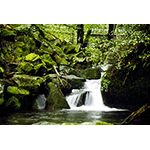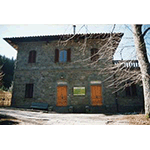Arboreti Sperimentali di Vallombrosa [Experimental Arboretums of Vallombrosa]
The Arboretums originated with the transfer of the Royal Superior Institute of Forestry to the Abbey of Vallombrosa, after the sale of the Paterno farm (the Institute’s original headquarters). At that time, some two hundred trees were also transferred and formed the first nucleus of today’s arboretums, planted following further acquisitions of land. In 1890, a small portion of the arboretum became a botanical garden, and in 1934, the Dendrological Museum was set up. Today, the Arboretums are managed by the Experimental Institute of Forestry of Arezzo.
The collection of medicinal plants, mainly consisting of Tuscan and Italian specimens, is utilised for educational purposes. The plants are in the former Botanical Garden of the Institute of Forestry; the original nucleus dates to 2000 when the Garden was rehabilitated after years of abandon, following the Institute’s transfer to its headquarters at the Cascine Park in 1914.
The arboretums are made up of trees and shrubs characteristic of the flora of the northern hemisphere (North America, Europe and Asia). The plants are divided into six arboretums which occupy a surface area of approximately 100,000 square metres inside the Vallombrosa Nature Reserve. Among these, the Masso del Diavolo Arboretum with plants from the Mediterranean region is of particular interest.
The Dendrological Museum exhibits wood types, seeds, portions of plants and a collection of specimens of the wood species present in the Arboretum. The exhibits are mainly preserved dry, at times in a liquid.
****************************
Texts by Donato Monaco
English translation by Victor Beard
Last update 11/feb/2008





